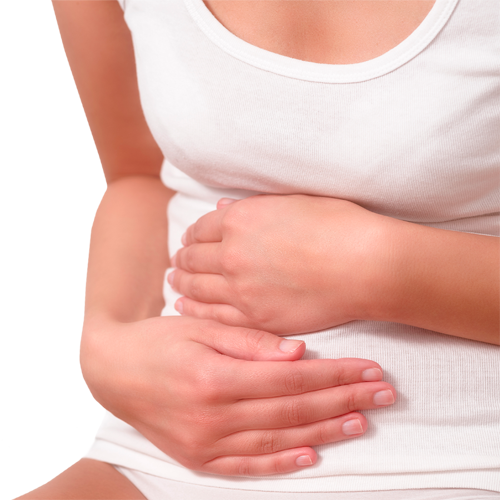Endometriosis affects one in ten women of childbearing age. Learn to recognize this condition, so you don't have to suffer in silence.
The menstrual cycle and the endometrium
The inside of the uterus is lined with a mucous membrane called the endometrium, which is constantly renewing itself. In fact, it reacts to hormonal changes and thickens throughout the menstrual cycle. At the end of this cycle, if the ovum (egg) is not fertilized, part of the endometrium is evacuated during menstruation.
Endometriosis
Endometriosis occurs when the endometrium extends outside the uterus and develops in the following areas, the:
- ovaries
- outside surface of the uterus
- fallopian tubes
- ligaments that support the uterus
- bladder
- rectum
- intestines, and
- kidneys
No matter where it is located, the endometrium reacts in the same way to hormonal changes. Therefore, endometriosis causes a blood effusion that cannot be evacuated, which results in the inflammation of neighbouring organs and pain.
Signs and symptoms of endometriosis
The signs and symptoms of endometriosis vary from one woman to the next and depending on the endometrium's growth site outside of the uterus. Endometriosis may cause:
- abnormal menstrual pain that begins a few days before your period and lasts throughout menstruation
- chronic pelvic pain (in the lower abdomen)
- pain during intercourse
- difficulty conceiving a child
- gastrointestinal disorders
- pain during urination at the time of menstruation
- cyst formation
- adhesion formation, in other words, tissue production that connects two neighbouring organs together in an abnormal manner
Physical pain can be accompanied by certain psychological symptoms such as fatigue, depression, or a feeling of isolation.
Symptom severity or pain intensity do not determine the extent or severity of endometriosis.
The causes of endometriosis
The causes of endometriosis are unknown. However, some characteristics appear to be risk factors, for instance:
- lack of previous pregnancy
- family history of endometriosis by the mother or a sister
- being a white or Asian woman
- early menstruation
The diagnosis of endometriosis
Endometriosis is usually diagnosed in women between the ages of 25 and 40 who consult their doctor because of intense pain in the lower abdomen or for fertility problems (30% to 40% of women who have endometriosis have problems conceiving a child). However, in some cases, endometriosis can sometimes be asymptomatic and be discovered "by coincidence" during surgery.
If you think you may have endometriosis, it is important to consult a healthcare professional, as several of its symptoms are similar to other pathologies. Therefore, all the possible causes of your symptoms must be evaluated.
In general, medical attention is required if you present any of the following symptoms:
- strong menstrual pain that affects your quality of life
- frequent lower abdominal pain that has lasted more than three months
- increased pain during menstruation, intercourse, or urination
Note where the pain is located, when it occurs, and what elements increase or diminish it. This valuable information will help your healthcare professional to make a diagnosis and to implement the appropriate treatment. See your doctor promptly, as untreated endometriosis tends to worsen over time.
Treatment of endometriosis
There is currently no cure for endometriosis. However, there are treatments to relieve pain, decrease the growth of the endometrium outside the uterus, delay the return of disease or restore fertility.
Various medications can be prescribed to reduce the symptoms of endometriosis, for instance, anti-inflammatory drugs to relieve pain, or combined oral contraceptives taken on a continuous basis (every day, without a week off), to prevent menstruation (other hormonal treatments may also be prescribed for this purpose or for other reasons).
Some alternative therapies are also possible, such as physiotherapy, massage therapy, and acupuncture. Physical activity can also be beneficial. Because endometriosis can have psychological consequences, some women may want to receive psychological support.
In some cases, surgery may be beneficial.
Pharmacists are knowledgeable about the various treatments of endometriosis. They can inform you about how they work, the benefits and dosage of the prescribed medication, the precautions to be taken, drug interactions, and the possible side effects. They can also give you advice about the non-pharmacologic measures likely to ease pain (taking a hot bath, using a heating pad, practising relaxation techniques, etc.).
If you are experiencing pain similar to the one described in this article or if you notice any other typical symptom of endometriosis, see a healthcare professional promptly.
